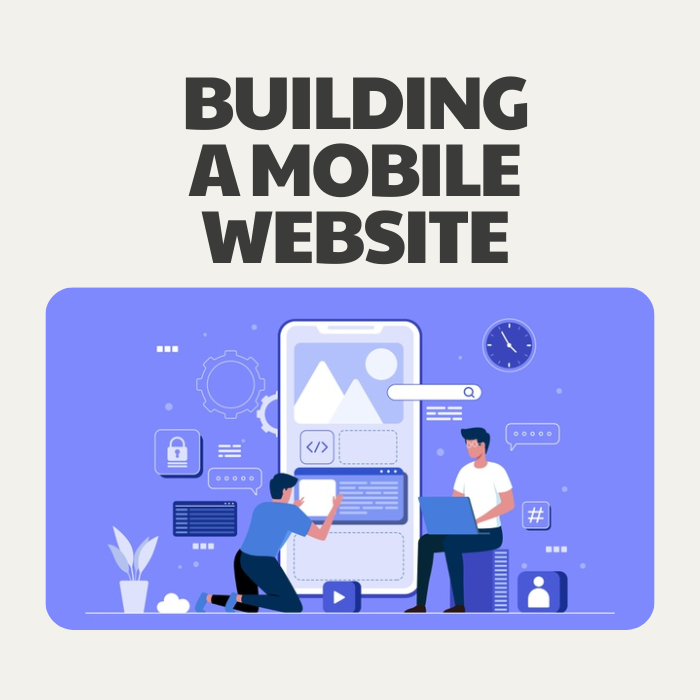Building A Mobile Website
Welcome to the world where everything is at our fingertips – quite literally! With mobile devices becoming an inseparable part of our lives, it’s no wonder that having a strong online presence has never been more crucial. Whether you’re a business owner, blogger, or simply someone who wants to share their passion with the world, building a mobile website is now an absolute necessity.
But fear not! In this blog post, we will guide you through every step of creating an eye-catching and user-friendly mobile website that will leave your audience impressed and craving for more. So grab your smartphones and get ready to embark on a journey towards digital success – let’s build a remarkable mobile website together.
Table of Contents
What is a Mobile Website?
A mobile website is a website that is designed to be accessed by mobile devices such as smartphones and tablets. Mobile websites are typically smaller and simpler than regular websites, and they may use different technologies such as responsive design to provide a better experience on smaller screens. Many businesses now have both a regular website and a mobile website, so that their customers can access the information they need no matter what device they are using.

Different Types of Mobile Websites
Different types of mobile websites include responsive design, dynamic serving, and separate URLs:
Responsive design is a single website that adapts to any screen size. Dynamic serving is a single website with different HTML (and sometimes CSS) code on the same URL depending on the user agent requesting the page. Separate URLs is having a different website altogether for mobile users with a completely different URL than the desktop version.
The most important factor to consider when deciding which route to take for your mobile website is the budget and time you have available. If you have limited resources, then a responsive design may be the best option since it only requires one website be created. If you have more time and money available, then creating a separate mobile website may be worth considering so that you can tailor the experience specifically for mobile users.
Benefits of Having a Mobile Website
There are plenty of reasons to have a mobile website in addition to your regular website:
For starters, mobile internet usage is growing at an incredibly rapid pace. In fact, mobile internet usage has now overtaken desktop internet usage for the first time ever. This means that more people are using their smartphones and tablets to go online than ever before – and this trend is only set to continue.
What’s more, studies have shown that people are far more likely to take action (such as making a purchase) when they’re using a mobile device. So if you want to increase conversions and sales, then having a mobile-optimized website is essential.
Another key benefit of having a mobile website is that it gives you another avenue for marketing your business. By optimizing your site for mobile search engines such as Google, you can reach an even wider audience and attract even more potential customers.
There are many advantages to having a mobile website. If you don’t have one already, we recommend that you start working on one as soon as possible.
Tools and Resources Necessary to Build a Mobile Website
When it comes to building a mobile website, there are a few tools and resources you’ll need to get the job done. First, you’ll need a good text editor. There are many great options out there, but we recommend Atom or Sublime Text.
Next, you’ll need a way to test your mobile website on different devices. The best way to do this is by using an online tool like Browser Stack or Responsive Design Checker.
You’ll need some design inspiration. A great place to start is with Google’s Material Design guidelines. Once you have an idea of what you want your mobile website to look like, you can start putting together your HTML and CSS code.
Steps for Building a Mobile Website
Assuming you have a website already, there are only a few steps you need to take in order to make a mobile-friendly website:
- Invest in responsive design: This is by far the most important step when it comes to building a mobile website. By using responsive design, you ensure that your website will look great and work properly no matter what size device it’s being viewed on.
- Use large easy-to-tap buttons: Small buttons can be difficult to tap on a mobile device, so be sure to use large buttons that will be easy for your mobile visitors to tap.
- Simplify your forms: Forms can be tricky on mobile devices, so it’s important to keep them as simple as possible. Just ask for the bare minimum of information that you need from your users.
- Optimize your images: Large images can really slow down a page on a mobile device, so make sure to optimize your images for the web before adding them to your site. You can do this using an image compression tool like Image Optim (https://imageoptim.com/).
- Use an HTML5 doctype: This ensures that your pages will render properly on all devices, including mobile devices.
- Test, test, test: Be sure to test your site on as many different devices as possible before launch to make sure everything looks and works the way you want it to.
Tips for Optimizing Your Mobile Website
- Keep it simple: when it comes to mobile websites, less is definitely more. Stick to the essentials and resist the urge to cram too much content onto your mobile site.
- Optimize your images: large images can really slow down a mobile website, so make sure to optimize them for faster loading times.
- Use responsive design: with responsive design, your website will automatically adjust to fit any screen size, making it much easier for mobile users to view and navigate your site.
- Avoid Flash: while Flash may look nice, it doesn’t work on most mobile devices and can actually make your website slower to load.
- Minimize redirects: each time a user is redirected to another page, it takes longer for the page to load. Try to minimize the number of redirects on your mobile website for a faster experience.
Common Mistakes to Avoid When Building A Mobile Website
When you’re building a mobile website, there are a few common mistakes that you’ll want to avoid. Here are some of the most common mistakes:
- Not Optimizing Your Images: One of the biggest mistakes you can make when building a mobile website is not optimizing your images. Large images can take forever to load on a mobile device, so it’s important to optimize them for the web. You can do this by reducing the file size of your images and using compression.
- Not Using Responsive Design: Another mistake that’s common when building a mobile website is not using responsive design. Responsive design is important because it ensures that your website will look good on all devices, regardless of their screen size. Without responsive design, your website may look stretched or broken on smaller screens.
- Forgetting About Touchscreen Users: If you’re building a mobile website, it’s important to remember that not all users will be using a touchscreen device. Many users will still be using keyboards and mice, so it’s important to make sure that your website is accessible for those users as well. Touchscreen users should also be able to use your website without any problems.
- Not Testing On All Devices: One of the most common mistakes people make when building a mobile website is not testing their site on all devices. It’s important to test your site on as many devices as possible so that you can catch any errors.
Conclusion
Building a mobile website can seem daunting, but it’s worth the effort to ensure that your business is accessible and attractive to people who are using their phones to search for information.
By following these tips, you can create a great mobile experience for your customers. With careful research and attention to detail, you can build an effective mobile website that will help increase traffic and revenue from your online presence.
Recommended Readings:https://codesparkler.com/best-easy-website-builder/






